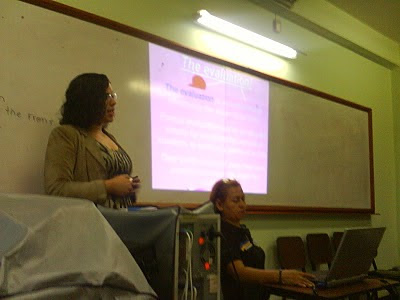This blog is created in order to make accesible the learning of English for the people. Through this tool, people can research about interesting topics discussed and elaborated by the students of 5ºth year of Education of English.
jueves, 1 de julio de 2010

Suggestopedia
is a teaching method developed by the Bulgarian psychotherapist Georgi Lozanov. The method has been used in different fields of studies but mostly in the field of foreign language learning.
Although people think that Suggestopedia is a methodology that works with relaxation, music, and baroque music, it is not.
Suggestopedia, however, does not use any kind of manipulative technique, such as hypnosis or guided imagery. It DOES NOT have any connection with SUPERLEARNING or NLP, although many people misunderstand Suggestopedia and think that it is Superlearning. This confusion is caused because after UNESCO approved and recommended Suggestopedia as a superior method (in 1978), Dr. Lozanov was placed under house arrest for 10 years in communist Bulgaria. During this time, the free world had no more access to him and researchers tried to use Suggestopedia according to their best understanding. Only after 1989 when the political situation changed in Bulgaria, Dr. Lozanov was able to move to Austria.

Total physical response (TPR) is a method developed by Dr. James J. Asher, a professor emeritus of psychology at San José State University, to aid learning second languages. The method relies on the assumption that when learning a second or additional language, language is internalized through a process of codebreaking similar to first language development and that the process allows for a long period of listening and developing comprehension prior to production. Students respond to commands that require physical movement. TPR is primarily intended for ESL/EAL teachers,[1][2] although the method is used in teaching other languages as well.[3][4][5] The method became popular in the 1970s and attracted the attention or allegiance of some teachers, but it has not received generalized support from mainstream educators.[6]
<
cooperative learning
<Cooperative learning
this is another method used in english class in which small teams, each with students of different levels of ability, use a variety of learning activities to improve their understanding of a subject. Each member of a team is responsible not only for learning what is taught but also for helping teammates learn, thus creating an atmosphere of achievement. Students work through the assignment until all group members successfully understand and complete it.
Cooperative efforts result in participants striving for mutual benefit so that all group members:
• gain from each other's efforts. (Your success benefits me and my success benefits you.)
• recognize that all group members share a common fate. (We all sink or swim together here.)
• know that one's performance is mutually caused by oneself and one's team members. (We can not do it without you.)
• feel proud and jointly celebrate when a group member is recognized for achievement. (We all congratulate you on your accomplishment!).
Some Cooperative Learning strategies
There are some popular strategies that can be used with all students to learn content (such as science, math, social studies, language arts, and foreign languages). Round Robin
Writearound
Team Jigsaw
Tea Party
this is another method used in english class in which small teams, each with students of different levels of ability, use a variety of learning activities to improve their understanding of a subject. Each member of a team is responsible not only for learning what is taught but also for helping teammates learn, thus creating an atmosphere of achievement. Students work through the assignment until all group members successfully understand and complete it.
Cooperative efforts result in participants striving for mutual benefit so that all group members:
• gain from each other's efforts. (Your success benefits me and my success benefits you.)
• recognize that all group members share a common fate. (We all sink or swim together here.)
• know that one's performance is mutually caused by oneself and one's team members. (We can not do it without you.)
• feel proud and jointly celebrate when a group member is recognized for achievement. (We all congratulate you on your accomplishment!).
Some Cooperative Learning strategies
There are some popular strategies that can be used with all students to learn content (such as science, math, social studies, language arts, and foreign languages). Round Robin
Writearound
Team Jigsaw
Tea Party
Content-based, Task-based and Participatory approaches


Content-based, Task-based and Participatory approaches
CLT – giving students
opportunities to practice using the communicative function of making predictions;
These 3 approaches:
* Giving priority to
process over predetermined linguistic content
* Students ‘use English to learn it’, rather than ‘learning to use English; teaching through communication, rather than for it.
* Difference their focus.
CONTENT-BASED APPROACH
It integrates the learning of language with the learning of some other content, often academic subject matter – academic subjects provide natural content for language instruction.
On the other hand, it offers the significant advantage that second language students do not have to postpone their academic study until their language reaches a high level .
TASK-BASED
Teacher provides learners with a natural context for language use.
- Activity has purpose and needs outcome.
- Teacher goes through a pre-task with students before they work individually.
- Teacher goes through the task step-by-step.
Suscribirse a:
Comentarios (Atom)
